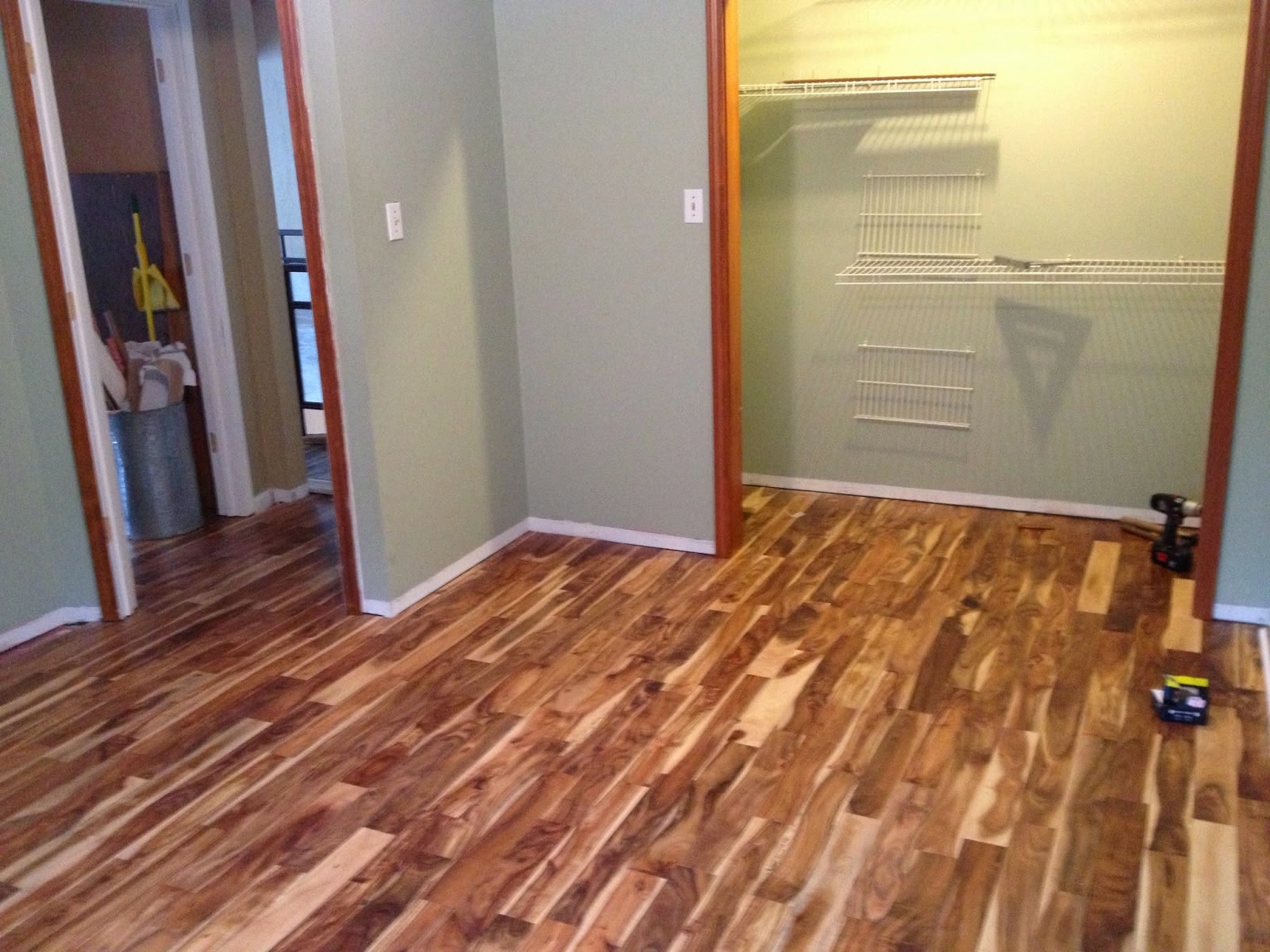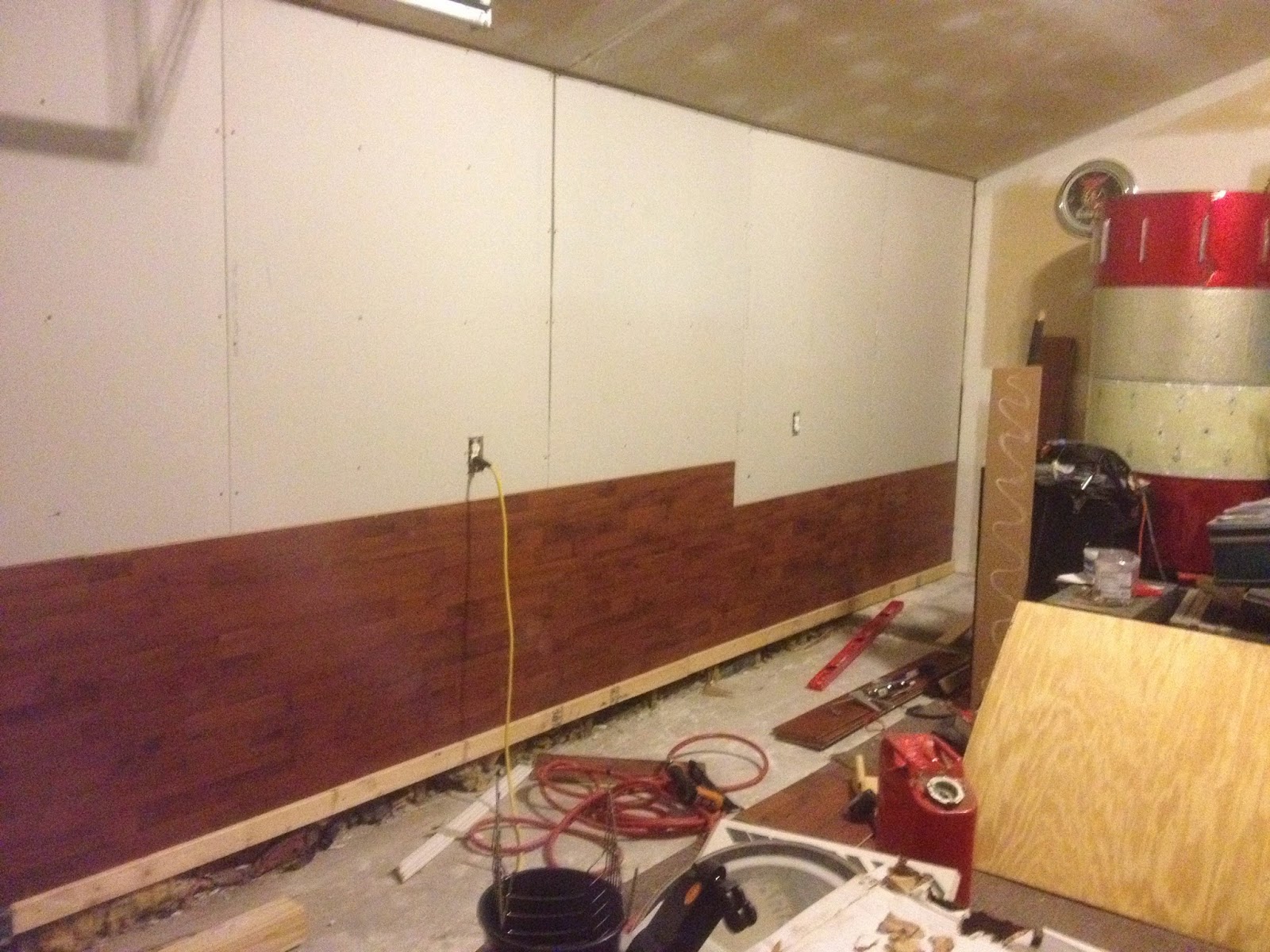I'm a thrift store addict. BUT, I'm have a manageable addiction. I'm luckily addicted only to the hunt, but not with the thrill of buying everything I can just cause it's a great deal. I can justify my purchases because I have a vision, and can let things go if they don't work out. In some cases I hoard, but there is always an eventual purge.
Last week, I found a tall end table for the front door for $15, a set of speakers for $12 and a pair of floating shelves for $10/ea, and they all had a place almost immediately.
We were originally going to use the shelves in Ollie's room, but then we moved a bunch of stuff around, adding some furniture (including this mini hutch we got from one of Becky's coworkers), and ultimately not thinking they'd fit.
So then we thought maybe next to the mirror by the kitchen, but while I held them up on the wall, Becky thought it'd feel too crowded.
So we walked around the main floor, holding them up to different walls, trying to figure it out. THEN, I held them up in the little nook by the desk, and thought it was perfect. I put a couple coats of polyurethane on them and put them up on the wall.
Then I remembered the speakers. They were shallow enough for these shelves (almost like they were meant for it), AND the location was such that the receiver for the stereo was right on the other side of the wall, so I could wire them up without showing any wires at all. It was destiny.
I put the speakers on the shelves, stepped back to make sure they were in the right locations, made a mark in the center (where the connections would be made to the back of the speakers), and measured. I measured up from the floor and over from the left wall, so that I had my coordinates. On the other side is speakers, records, and all sorts of other things I could drill right into if I wasn't careful. I took the same coordinates to the music room and made sure the coast was clear. I also made sure there was not a stud in either location - drilling right through a stud would be no good. Then I took a looooong 1/4" bit I had acquired somewhere along the way and drilled a hole straight through. If I didn't have such a bit, I could have measured really carefully and drill on both sides. I then took a disassembled coat hanger (since I don't have a fish tape), taped the speaker wire to the end of the coat hanger using electrical tape and guided it through the wall. Electrical tape is the best because it's sticky (but not too sticky), strong and thin enough to not add too much bulk.
I then attached the ends to the speakers, pulled the excess through, cut off what was not needed, and added to the receiver. Tested, and they both work wonderfully.
They have a little hollow vintage sound to them that is best for old country records, but not great for heavy bass, but for being small, I was surprised as to how great they actually sound. Mostly they look great!
That started me on getting this little area more in order, so I finished off the bead board on the side of the stairs and added the baseboards. I also added a couple of frames next to the shelves to sort of round out that wall.
Once again I'll say that the bead board SHOULD HAVE gone on before the stair treads, so learn from my mistake if you ever have to do this. My work in this area will look okay, but it's not ideal, and it'll be one of those things that will haunt me every time I look at it.
We still need to paint the bead board and add some other little things, like this Pinterest idea I'm implementing:
We picked two up from IKEA, and I'm skipping the stain step and just adding a couple coats of poly to match the floating shelves.
Last week, I found a tall end table for the front door for $15, a set of speakers for $12 and a pair of floating shelves for $10/ea, and they all had a place almost immediately.
We were originally going to use the shelves in Ollie's room, but then we moved a bunch of stuff around, adding some furniture (including this mini hutch we got from one of Becky's coworkers), and ultimately not thinking they'd fit.
So then we thought maybe next to the mirror by the kitchen, but while I held them up on the wall, Becky thought it'd feel too crowded.
So we walked around the main floor, holding them up to different walls, trying to figure it out. THEN, I held them up in the little nook by the desk, and thought it was perfect. I put a couple coats of polyurethane on them and put them up on the wall.
Then I remembered the speakers. They were shallow enough for these shelves (almost like they were meant for it), AND the location was such that the receiver for the stereo was right on the other side of the wall, so I could wire them up without showing any wires at all. It was destiny.
I put the speakers on the shelves, stepped back to make sure they were in the right locations, made a mark in the center (where the connections would be made to the back of the speakers), and measured. I measured up from the floor and over from the left wall, so that I had my coordinates. On the other side is speakers, records, and all sorts of other things I could drill right into if I wasn't careful. I took the same coordinates to the music room and made sure the coast was clear. I also made sure there was not a stud in either location - drilling right through a stud would be no good. Then I took a looooong 1/4" bit I had acquired somewhere along the way and drilled a hole straight through. If I didn't have such a bit, I could have measured really carefully and drill on both sides. I then took a disassembled coat hanger (since I don't have a fish tape), taped the speaker wire to the end of the coat hanger using electrical tape and guided it through the wall. Electrical tape is the best because it's sticky (but not too sticky), strong and thin enough to not add too much bulk.
I then attached the ends to the speakers, pulled the excess through, cut off what was not needed, and added to the receiver. Tested, and they both work wonderfully.
They have a little hollow vintage sound to them that is best for old country records, but not great for heavy bass, but for being small, I was surprised as to how great they actually sound. Mostly they look great!
That started me on getting this little area more in order, so I finished off the bead board on the side of the stairs and added the baseboards. I also added a couple of frames next to the shelves to sort of round out that wall.
Once again I'll say that the bead board SHOULD HAVE gone on before the stair treads, so learn from my mistake if you ever have to do this. My work in this area will look okay, but it's not ideal, and it'll be one of those things that will haunt me every time I look at it.
We still need to paint the bead board and add some other little things, like this Pinterest idea I'm implementing:
We picked two up from IKEA, and I'm skipping the stain step and just adding a couple coats of poly to match the floating shelves.













































